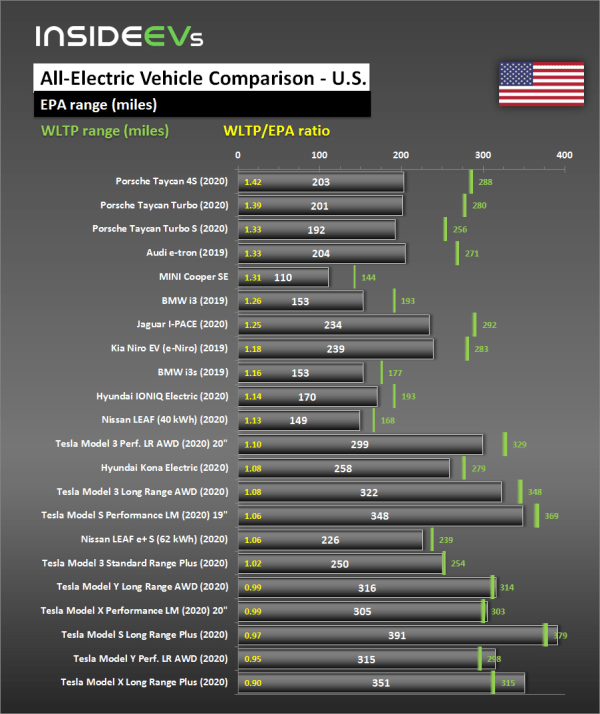EV Range: EPA vs. WLTP - A Detailed Comparison
Electric vehicles (EVs) have become increasingly popular in recent years due to their environmental friendliness and low operating costs. One of the key factors that potential EV buyers consider is range, which refers to the distance an EV can travel on a single charge. However, there are two main range rating systems used globally: the EPA's (Environmental Protection Agency) rating and the WLTP (Worldwide Harmonized Light Vehicle Test Procedure) rating. This article aims to provide a detailed comparison of the EPA and WLTP range ratings, highlighting their differences and similarities.

EPA Range Rating
The EPA range rating is used in the United States and is based on the FTP-75 (Federal Test Procedure 75) drive cycle. This drive cycle simulates a mix of city and highway driving conditions, with the emphasis on city driving. The EPA range rating is determined by driving an EV on a dynamometer, which is a machine that simulates real-world driving conditions.

The EPA range rating is a widely accepted and well-established measure of EV range. However, it has been criticized for being too optimistic, as it does not fully account for factors such as cold weather, aggressive driving, and carrying heavy loads. As a result, many EVs tend to have a shorter real-world range than their EPA-rated range.
WLTP Range Rating
The WLTP range rating is a newer test procedure that was developed by the United Nations Economic Commission for Europe (UNECE). It is used in the European Union, as well as in many other countries around the world. The WLTP drive cycle is more complex than the FTP-75 drive cycle, and it includes a wider range of driving conditions. The WLTP range rating is determined by driving an EV on a real-world road course.
The WLTP range rating is generally considered to be more realistic than the EPA range rating. It takes into account a wider range of driving conditions, and it is conducted on a real-world road course. As a result, WLTP range ratings are typically lower than EPA range ratings.

Comparison of EPA and WLTP Range Ratings
The table below provides a comparison of the EPA and WLTP range ratings for a number of different EVs:
Tesla Model 3 Long Range - 322 EPA range (miles) - 353 WLTP range (miles)
Chevrolet Bolt EV - 212 EPA range (miles) - 259 WLTP range (miles)
Nissan LEAF -168 EPA range (miles) - 215 WLTP range (miles)
Hyundai Kona Electric - 258 EPA range (miles) - 289 WLTP range (miles)
Kia Niro EV - 239 EPA range (miles) - 285 WLTP range (miles)
As you can see from the table, the EPA range ratings are typically higher than the WLTP range ratings. This is because the EPA drive cycle is more heavily weighted towards city driving, which is more efficient than highway driving. In addition, the EPA drive cycle does not take into account factors such as cold weather, aggressive driving, and carrying heavy loads.
Factors Affecting EV Range
In addition to the EPA and WLTP range ratings, there are a number of other factors that can affect the real-world range of an EV. These factors include:
* Driving style: Aggressive driving, such as rapid acceleration and braking, can reduce EV range.
* Temperature: Cold weather can reduce EV range by up to 20%. This is because the battery pack is less efficient in cold weather.
* Terrain: Driving on hilly terrain can also reduce EV range.
* Payload: Carrying a heavy payload can reduce EV range.
The EPA and WLTP range ratings are two different measures of EV range. The EPA range rating is based on a city-weighted drive cycle and is typically higher than the WLTP range rating. The WLTP range rating is based on a more realistic drive cycle and is generally considered to be more accurate.
When considering the range of an EV, it is important to take into account factors such as driving style, temperature, terrain, and payload. These factors can all affect the real-world range of an EV, and it is important to be realistic about what range you can expect to achieve.
